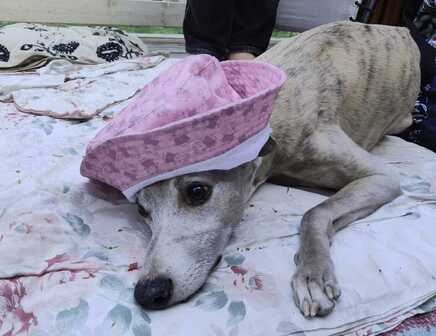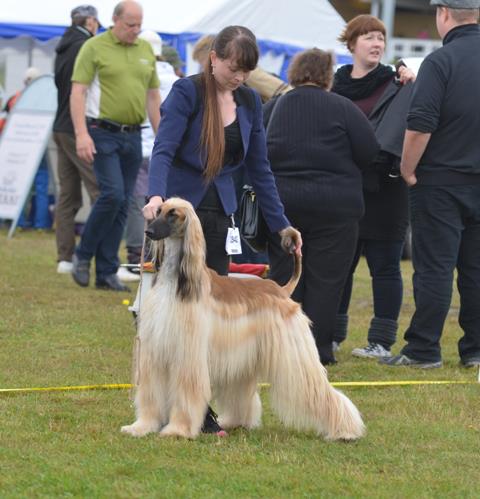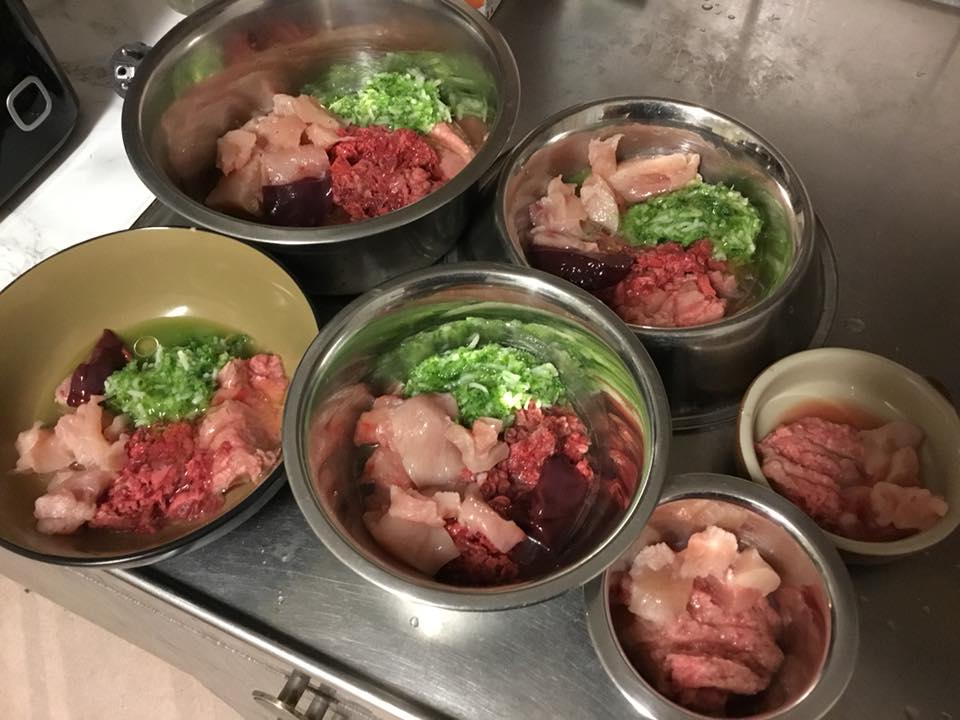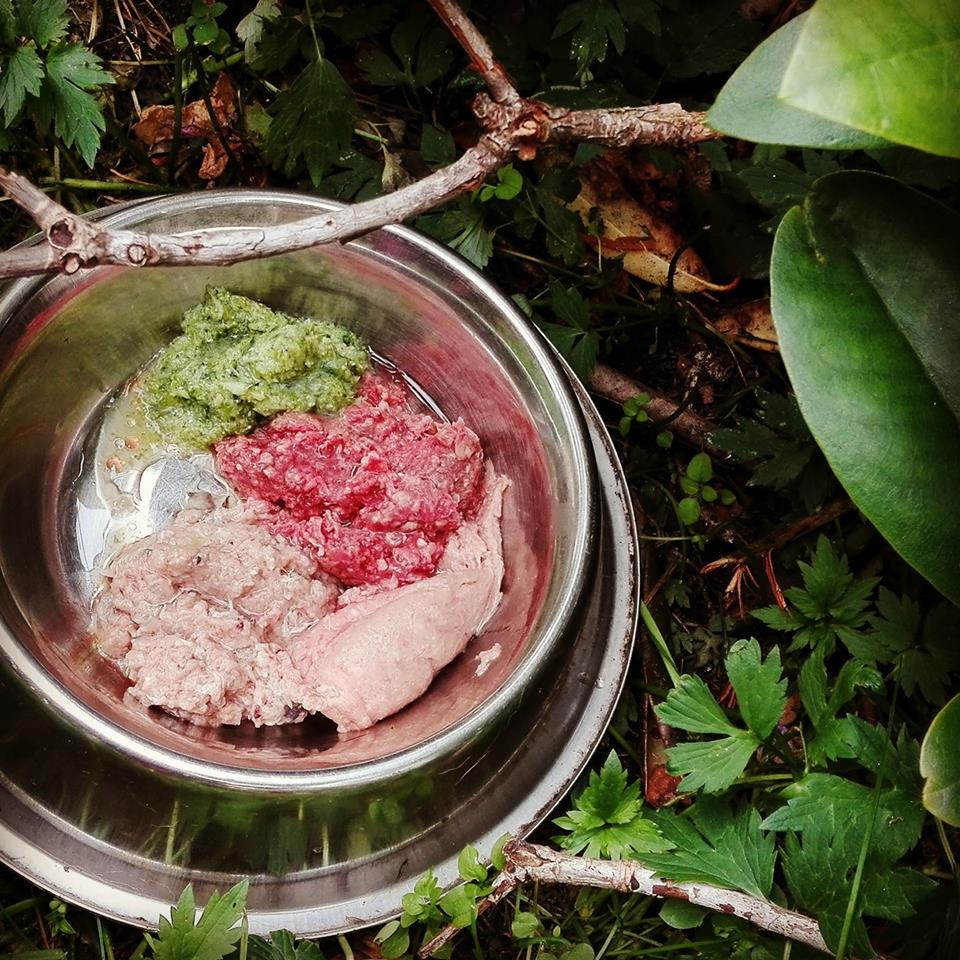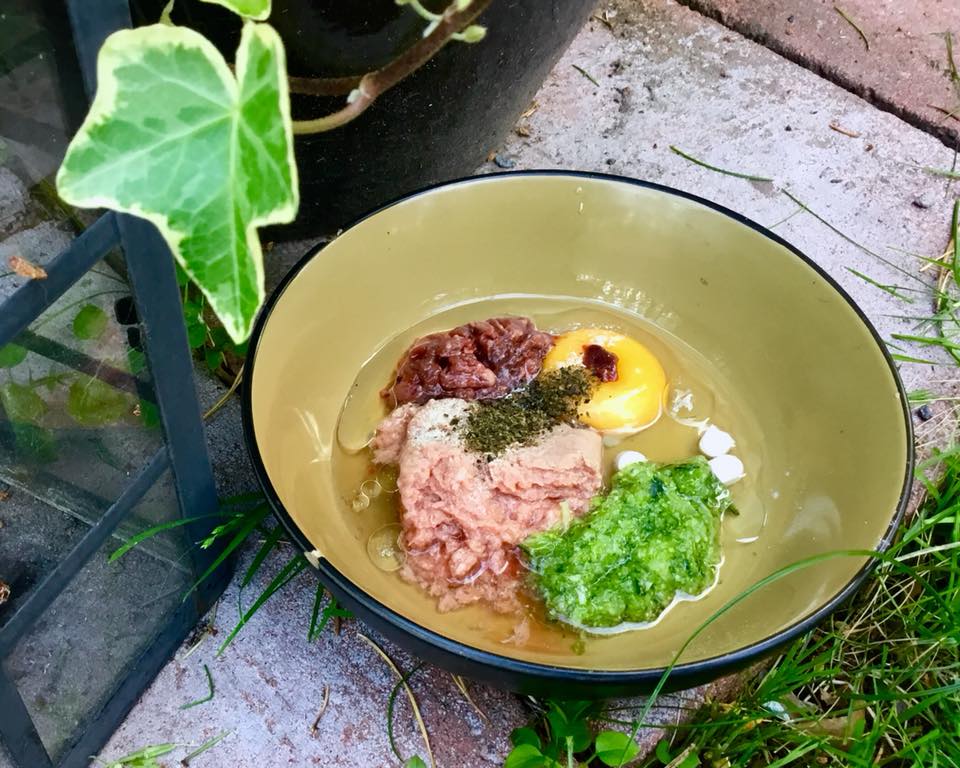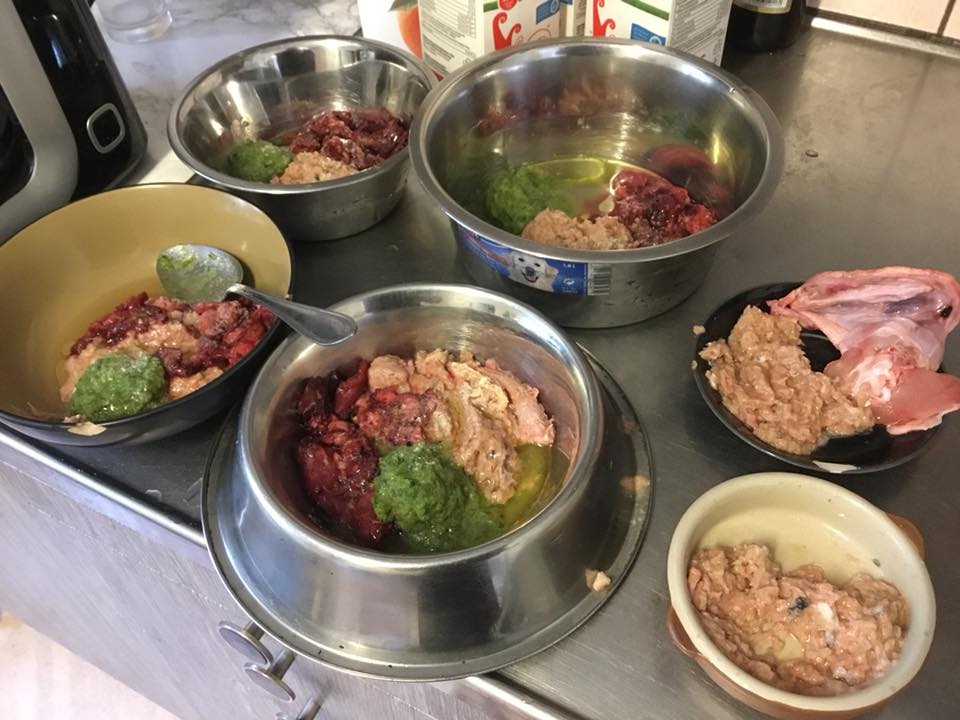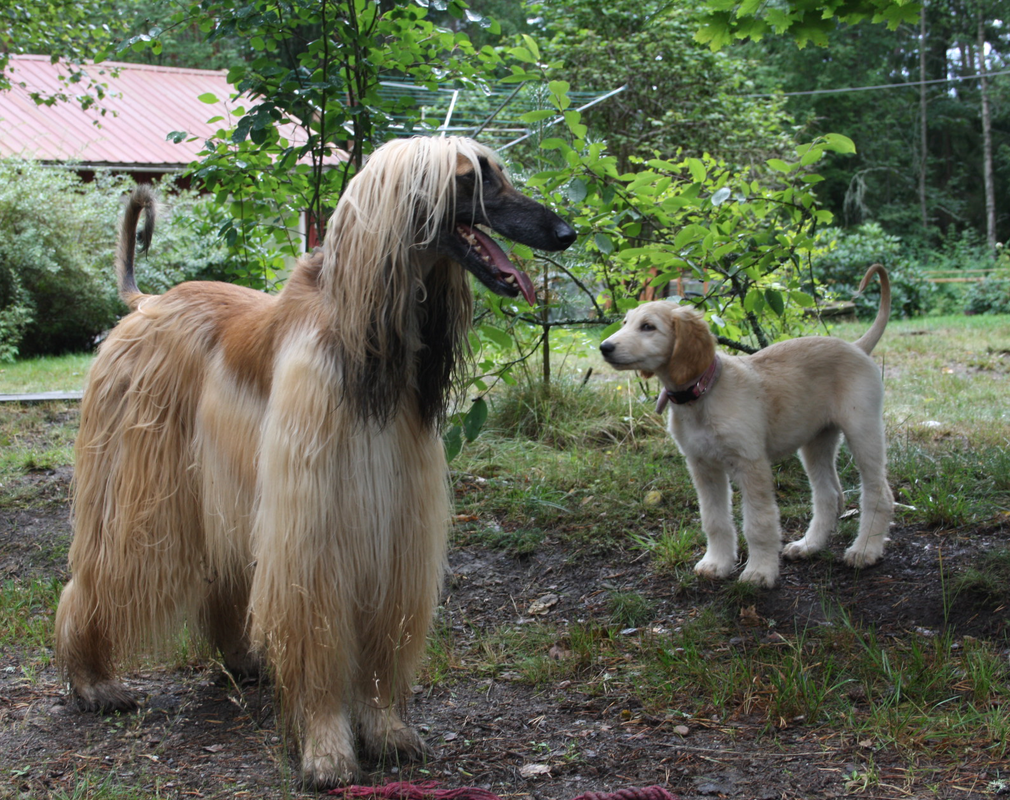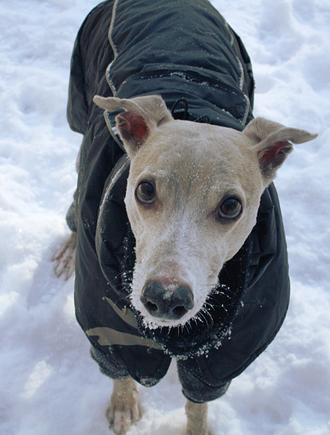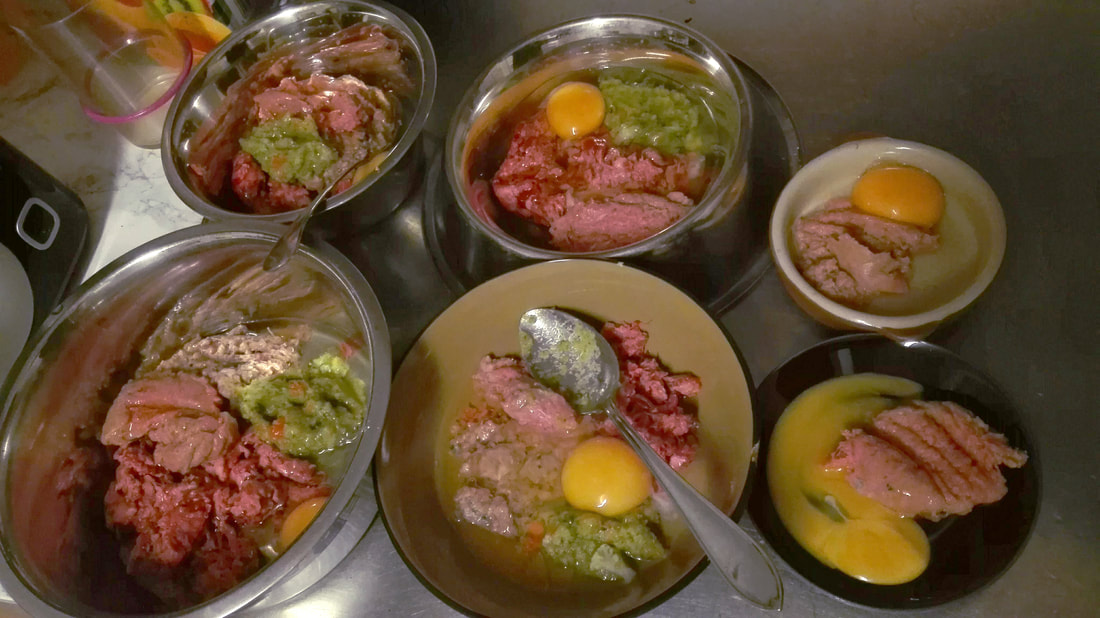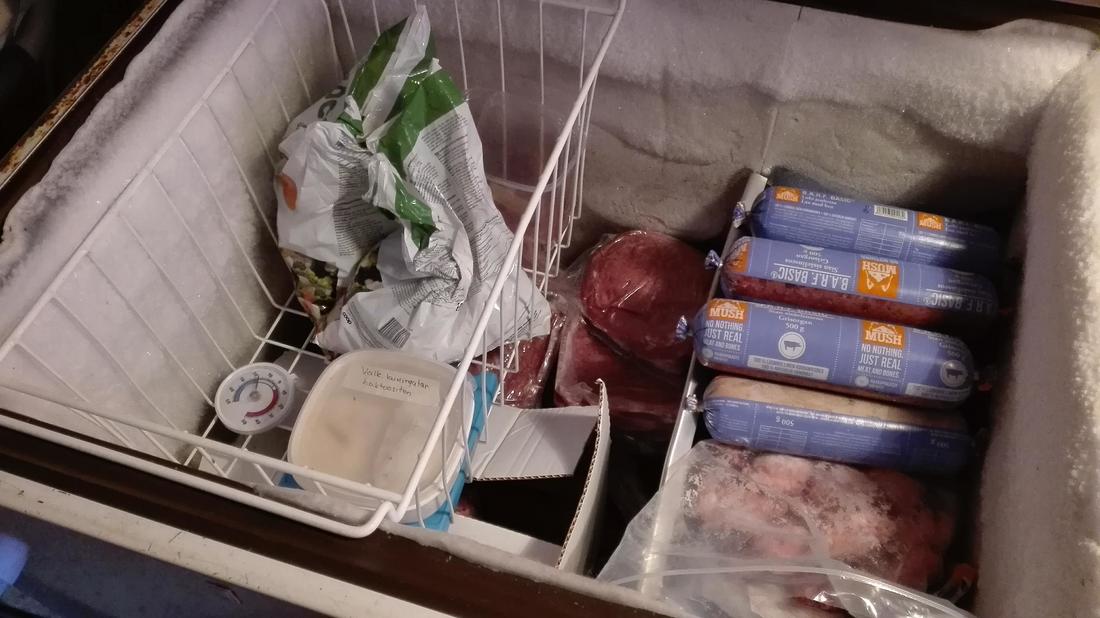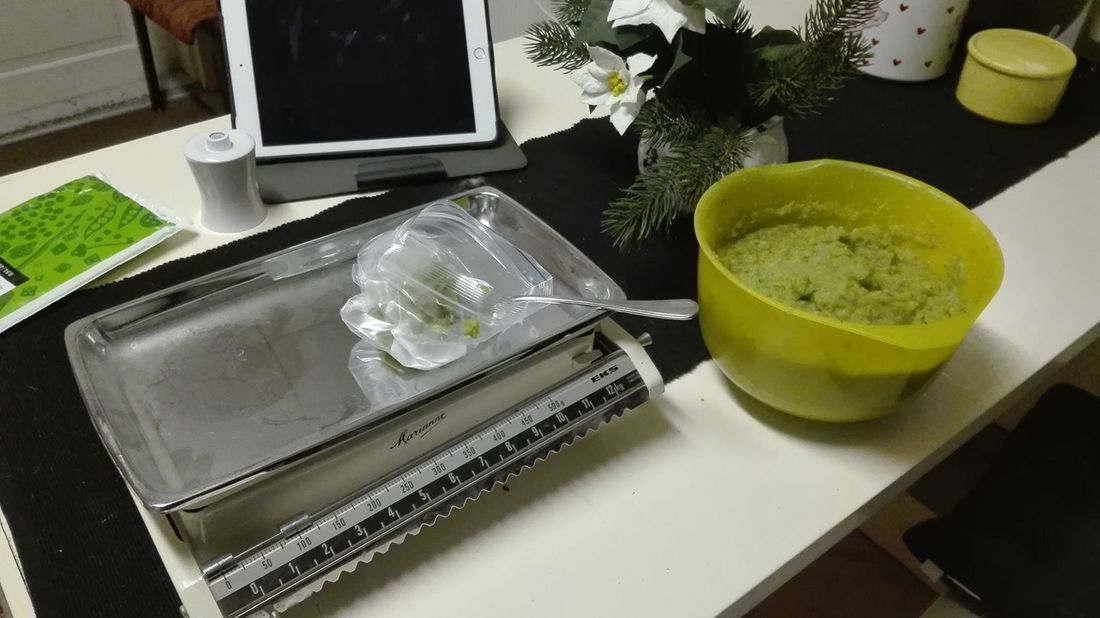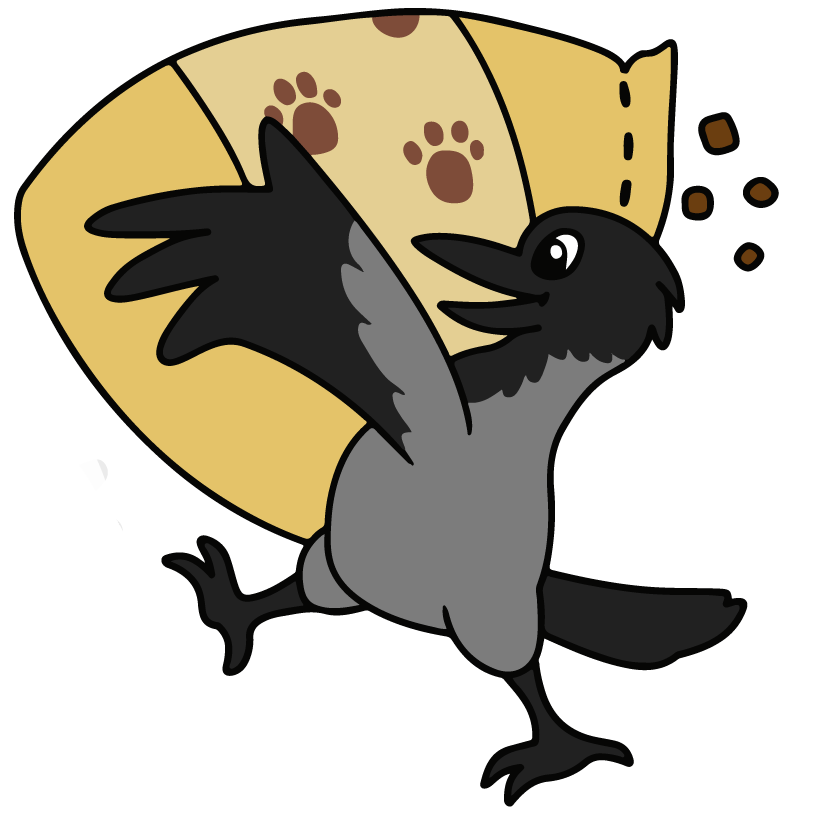|
Häkittäminen on koiramaailman kuuma peruna. Kukaan ei halua ottaa häkkiin mitään oikeaa kantaa; se on AINA väärin, paitsi harrastuksissa, lääkärin määräämänä tai hotellissa. Häkkiin on totutettava, mutta siinä ei saa olla. Häkki ahdistaa, mutta oikeissa tilanteissa se rauhoittaa. Häkki luo stressiä, mutta toisissa tilanteissa poistaa sitä. Sekavaa? Älä. Avataanpa hieman sitä, mistä on kyse. Häkki. Suomisanakirja.fi sanoo häkin olevan "Koppimainen rakennelma, jonka katto ja seinät (tai ainakin yksi niistä) on tehty (metalli)tangoista, verkosta tms." Koiramaailmassa häkki tarkoittaa yleensä tarhaa pienempää, mahdollisesti mukaan taittuvaa metalli- tai kangasviritelmää, joka tukirakenteidensa avulla saadaan pystytettyä verrattain nopeasti ja jonka sisällä koiran tulisi mahtua istumaan, makaamaan rennosti ja seisomaan. Häkittäminen nousi tapetille jo vuosikausia sitten eläinsuojelujärjestöjen tehdessä hyvää työtä koirien ja muiden otuksien paremman elämän puolesta. Eläinsuojelulaki ei kuitenkaan mainitse kuljetushäkeistä, näyttelyhäkeistä tai harrastushäkeistä ihan kamalasti. Niissä otetaan kantaa lähinnä isompiin, koiran säilömiseen tarkoitettuihin tarhoihin. Pienemmistä häkeistä sanotaan ainoastaan seuraavaa: "”Kissaa tai koiraa taikka muuta eläintä saadaan pitää sen kuljetukseen tarkoitetussa laatikossa tai häkissä taikka muussa vastaavassa pienikokoisessa säilytystilassa vain, jos eläimen kuljettaminen, sairaus tai muu tilapäinen ja hyväksyttävä syy sitä vaatii.” Mikä on tämä "muu tilapäinen ja hyväksyttävä syy"? Tässä tulee vastaan lain tulkinnanvaraisuus. Esimerkiksi minulle aggressiivisen rodun omistajana hyväksyttävä syy on muiden eläinten ja aggressiivisen eläimen itsensä turvallisuuden takaaminen. Tilapäisyyden tulkitsen niin, ettei koiraa saa säilyttää pienessä häkissä pitkiä aikoja eikä silloin, kun sille on mahdollista taata muulla tavoin turvallinen ympäristö, jossa se ei ole muille vaaraksi. Kauanko häkissä saa viettää aikaa? Tämäkin on tulkinnanvaraista. Mitään tarkkaa aikarajaa ei ole määritelty. Tilapäisyys viittaisi kuitenkin siihen, ettei otus ole siellä toistuvasti pitkiä aikoja. Miten sitten esimerkiksi öiden nukkinen häkissä? Työkoiran pitkät päivät häkissä auton takana? Kummassakin tapauksessa kyseessä on perusteltu syy (kuljettaminen, lemmikin turvallisuuden takaaminen), mutta koira on häkissä toistuvasti, kuitenkin tilapäisesti. Suomen häkkilaki on siis aika tiukka, vaikka sitä miten tulkitsisi. Kuitenkin esimerkiksi Yhdysvalloissa koirat ovat poissaolojen ajan lähes poikkeuksetta häkissä. Crate training on tärkeä osa sikäläisen koiranpennun yksinolo-opetusta. Myös Suomessa häkittämiseen törmää useimmiten juuri yksinolon kanssa. Jonkin verran siihen törmää myös silloin, jos talossa on useita koiria, jotka eivät tule toimeen keskenään ja kaikille olisi taattava tarpeeksi sosiaalista kontaktia ja vapautta. Puolensa ja puolensaHäkki ei aiheuta koiralle traumoja, mikäli häkissä oleminen ei ole koirasta epämukavaa tai sitä ei säilytetä siellä toistuvasti pitkiä aikoja sen ollessa hereillä. Öiden nukkuminen häkissä tuskin stressaa yhtäkään otusta, jos häkki on sille kyllin tilava. Jotkin koirat myös selvästi rauhoittuvat päästessään "luolaan" ja oikein sijoitettu, peitetty, pehmoinen häkki voi myös auttaa esimerkiksi hermostuneen lemmikin totuttamista vieraisiin. Häkki ei kuitenkaan oletusarvoisesti ole jokaisen koiran lempparipaikka. Hereillä ollessaan häkissä odottava eläin herkästi turhautuu. Kun koiralla on halu tehdä, sillä olisi energiaa tehdä, mutta se on suljettuna pieneen tilaan se ahdistuu ja stressaantuu. Hetkellisesti hereillä odottamisesta ei ole haittaa, vaikkei koira siitä kamalasti nauttisikaan (vaikkapa harrastuksissa oman vuoron odottaminen), mutta toistuvasti ja pysyvästi liian pitkiä aikoja häkissä viettäneet eläimet alkavat ilmentää stressiä ja käyttäytyvät impulsiivisesti. Niillä on valtavasti patoutunutta energiaa, jota ne epätoivoisesti haluavat purkaa ihan mihin tahansa. Juuri patoutuvan energian aiheuttaman stressin takia esimerkiksi itsensä tuhoilulla vaarantavan koiran häkittäminen työpäivien ajaksi on kaksipiippuinen asia; toisaalta se on perusteltua, monesti jopa ihan oikeasti tarpeellista, jos koira tuhoaa KAIKEN ihan vain nuoruuden innossaan (ja uskokaa minua, näitä koiria on. Jokaisella tuhoavalla koiralla ei suinkaan ole pitkittynyttä tylsyyttä tai eroahdistusta. Ne vain tykkäävät askarrella), mutta vaakakupin toisella puolella vaanii rajoittamisen aiheuttama stressi. Tämä stressi voi päin vastoin pahentaa tuhoilua. On siis ehdottomasti tarpeen pyrkiä mahdollisimman nopeasti pois työpäivähäkittämisestä tuhoilun vuoksi. Tämä vaatii yksinoloharjoittelua, treenaamista ja koiran elekielen tuntemista. Häkki on siis väliaikainen työkalu, jolla varmistetaan koiran turvallisuus pidempien poissaolojen ajan, ei suinkaan pysyvä ratkaisu. Työkaluna häkkiä ei kuitenkaan tule väheksyä, sillä esimerkiksi kodinvaihtaminen nuoruuden intotuhoilun vuoksi on ylimitoitettu ja koiraa huomattavasti enemmän stressaava ratkaisu. Joissakin tapauksissa, hyvin harvoin, häkki ON pysyvä ratkaisu esimerkiksi poissaolojen ajaksi. Tällasia tapauksia on kuitenkin erittäin vähän ja syy on yleensä aina terveydellinen (henkisesti tai fyysisesti). Häkkiin tulee opettaa, jotta häkki on koirasta mukava mesta. Osa koirista oppii pitämään häkistä huomatessaan, että siellä on kivaa, rauhallista ja turvallista. Osa koirista on sitkeästi sitä mieltä, että maailma ulkopuolella on häkkiä kivempi paikka. Tällaisille koirille häkistä on tehtävä miellyttävä paikka. Kivan kauttaMeillä on lähes aina avonainen häkki olohuoneessa ja olen totuttanut koiria sinne nakkelemalla häkkiin nannaa tai ruokkimalla mahdollisen pennun siellä. Kaksi aikuisista koiristani pyrkii häkkiin nukkumaan, jos häkin ovi on auki, vaikka niillä olisi mahdollisuus valita mikä tahansa muu paikka. Kaksi suhtautuu häkkiin neutraalisti. Sotaperuna nukkuu mielellään häkissä yöllä, mutta ei muuten välittäisi olla siellä edes sitä 30 sekuntia, jonka aikana muut koirat ohittavat sen ulos mennessään. Jokainen osaa tarvittaessa rauhoittua häkkiin odottamaan, mikä on näyttelyissä ja muissa harrastuksissa usein tarpeen ja eduksi. Minulla on aina ollut tapana mieluummin opettaa ja kouluttaa koira hyvällä hyväksymään asioita kuin puhtaasti vaatia sitä alistumaan kohtaloonsa. En sano, ettenkö vaatisi joitakin asioita, mutta hyvin usein valitsen opettamisen. Tiedän ihmisiä, oikein hyvä koiranomistajia, jotka vaativat mieluummin kuin opettavat tällaisista asioista puhuttaessa, eikä tästä ole näyttänyt olevan heidän koirilleen mitään haittaa. Itse pidän siitä, että koirat valitsevat tehdä kuten haluan niiden tekevän. Minulla on se kokemus, että voin tällä tavalla toimiessani luottaa koirieni päätyvän omalta kannaltani miellyttäviin ratkaisuihin silloinkin, kun en ohjeista niitä. Tämän saman syyn takia käytän kouluttaessani positiivista vahvistamista, mutta se nyt on täysin toisen blogipostauksen aihe. 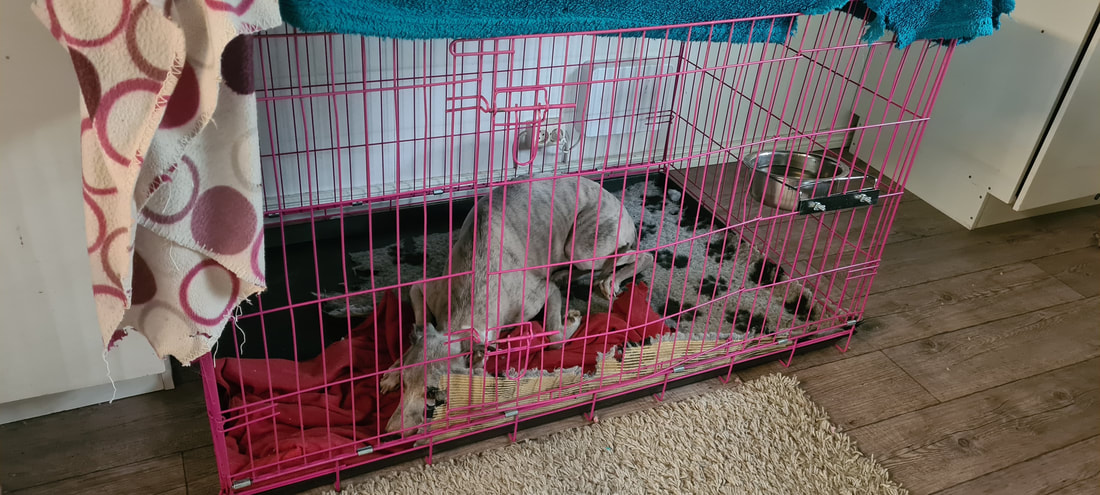 Haikalanen on koiristani ehdottomasti häkkimyönteisin. Silloin tällöin olen löytänyt sen häkistä näin ja olen hetkellisesti surkutellut, että onkohan se vahingossa lukinnut itsensä häkkiin eikä tajunnut, että ovea työntämällä se pääsisi ulos. Testasin kuitenkin asiaa yksi päivä kutsumalla sitä luokseni ja se tottuneesti työnsi oven auki nenällään sen suurempia ihmettelemättä. Niinpä oletan, että se ymmärtää pääsevänsä halutessaan ulos. Se vain valitsee nukkua häkissä, koska siellä on omaa rauhaa ja turvallista.
0 Comments
Kuten monet, myös minä halusin nuorempana väellä ja väkisin tehdä kaikesta hankalaa. Tuli tärkeä olo, kun koki tekevänsä vaikeita juttuja ja omistavansa hankalia koiria. Kuitenkin, omistaessani oikeasti vaativia koiria nyt, voin naureskella nuorelle itselleni ja sille raivokkaalle tarmolle, jolla yritin selitellä itselleni poikiani haastavammaksi kuin mitä ne olivat. Kyllä, Kenraalimajuri oli ja on vieläkin haastava koira hermorakenteensa puolesta, mutta noin muuten ei ollenkaan. Haikalanen on aina ollut ihastuttavan rentouttava elämänkumppani. Varsinkin nuorilla koiraharrastajilla on tapana tehdä asioista välillä turhan hankalia. Syyllistyin tähän itsekin, joten voin näin vuosia myöhemmin myöntää sen ja myös todeta näkeväni sitä toisissa. Koiranomistaminen on kilpavarustelua ja haastavan koiran kasvattamisesta voi lisätä sulan mentaaliseen hattuunsa. Niinpä koiraharrastajilla on tapana glorifioida vaikeutta ja hankaluutta ja tehdä ongelmia sinne, missä niitä ei todellisuudessa ole. Tämä on osaltaan tottumattomuutta, osaltaan antaa luvan olla silloin tällöin väsynyt ja lannistunut. Meidän tulisi olla armeliaampia itsellemme ja ymmärtää, että helponkin koiran kanssa on välillä vähän raskasta. Joskus on lupa todeta, että se vähäkin on tänään liikaa ja istua koko päivä katsomassa telkkaria ja syömässä lohturuokaa, kunhan koiran perustarpeista huolehditaan ja lusmuilu ei tule tavaksi. Haastavuuden ihannointi johtaa helposti siihen, että hankitaan liian vaikeita koiria. Tämä voi osaltaan kannustaa käyttämään kyseenalaisia koulutusmetodeita, kun oma taitotaso ei yksinkertaisesti riitä. Helposti käy myös niin, ettei niistä mutkattomista arjen kavereista ja niiden kouluttamisesta tajua ottaa itselleen krediittiä, vaikka ehdottomasti pitäisi! Oli koira miten mutkaton tahansa, jokainen hyvin käyttäytyvä koira on kouluttaneelle syystäkin ilon, onnen ja ylpeyden aihe. Myös sillä helpolla koiralla voi olla tai sille voi kehittyä ongelma, ja se taas ei tarkoita automaattisesti sitä, että kouluttaja on surkimus. Takana voi olla vaikkapa trauma. Hyvin käyttäytyvästä koirasta saa ja siitä pitää olla ylpeä, oli sen rotu mikä tahansa. Vaivaton, helposti arjen rutiinit ja tavat oppiva koira tulisi nostaa arvostuksessa korkeammalle kuin missä se on nyt. Sen kanssa pääsee nopeasti nauttimaan siitä, mitä koiranomistaminen on parhaimmillaan! Sujuvaa ja stressitöntäHaikalasen kanssa lenkkeily on sitä, mitä koiran kanssa ulkoileminen voi parhaimmillaan olla. Joskus Haikalanen voi pelästyä vastaantulevia, mutta jos tilanteet ennakoi ja pysyy itse rauhallisena, myös Haikalanen selviää ohituksesta nopeasti. Se ei vedä, muttei jumita. Se menee tasaista tahtia hihnanmitan edellä, kiskomatta, nuuhkii silloin tällöin ja tekee asiansa, muttei jää patsastelemaan. Sen kanssa voi uppoutua ihailemaan kevääseen heräävää luontoa tai tarkkailla pikkulintuja pajupusikossa. Sen kanssa voi pällistellä puroja ja hienoja kiviä ja maisemia, tai sen kanssa voi hölkätä rivakasti eteenpäin kunnonkohotusmielessä. Haikalanen ottaa kaikki ihmiset vastaan iloisesti. Se ei arkaile, ei ole vihainen, ei käyttäydy arvaamattomasti. Se ei tee itsestään numeroa vieraiden aikana, mutta tulee iloisena rapsuteltavaksi. Haikalanen on arjessa ihastuttavan mutkaton koira. Lumiprinsessa ja Sotaperuna ovat vaativia. Sotaperunan voimakas aggressio aiheuttaa erityisjärjestelyitä arkeen ja vaatii ahkeraa koulutusta ja treeniä pysyäkseen hallinnassa. Sillä on korkea energiataso ja se haluaa ja myös vaatii fyysistä ja psyykkistä haastamista. Lumiprinsessalla ei ole aggressiota, mutta se on aktiivinen ja touhukas koira, joka varsinkin nuorena tarvitsi roppakaupalla tekemistä ollakseen sisätiloissa ja lepohetkinä hallinnassa. Vaativan koiran kanssa pääsee haastamaan itsensä ja kehittyy kouluttajana. Monesti hyvä harrastuskoira on myös arjessa vaativampi kuin lupsakampi ja rennompi kaverinsa. Vaativan koiran kanssa voi arjestaan saada sujuvaa, mutta se ollatenkin VAATII vaivannäköä. Tästä syystä tulisikin aina kysyä itseltään, onko sille vaivannäölle aikaa? Onko siihen halua? Mukava, mutkaton rotu/koirayksilö antaa aivan yhtä paljon, mutta huomattavasti vähemmällä säätämisellä. Jos ei ole tahtoa eikä tarvetta nähdä vaivaa ja tehdä töitä, kannattaa koira valita se mielessä pitäen. Jokaiselle omansaVaikkei mikään koira ole vaivaton eikä helppo sellaiselle, joka ei koiran kanssa halua elää, vihkiytyneelle koiraihmiselle löytyy roppakaupalla suhteellisen helposti koulutettavia rotu/koiravaihtoehtoja. On paljolti myös asenteesta kiinni, minkä näkee ongelmana. Nuoren uroskoiran törttöilyt kuuluvat yksilöstä ja perimästä riippumatta usein asiaan. Ei niistä kannata vääntää ongelmaa. Ne ovat täysin tyypillisiä nuoren uroskoiran sähläyksiä, joihin kannattaa suhtautua nimenomaan sellaisina eikä vaipua ahdistuksen ja ankeuden suohon ja vakuutella itselleen oman koiransa haastavuutta. Ongelmia ei kannata tehdä sinne, missä niitä ei ole. Se lisää stressiä sekä omistajalla että koiralla. Tulisuuden ja särmän vaaliminen on tärkeää silloin, kun koiran tyypillisesti tulee tällaisia piirteitä syystä tai toisesta ilmentää. Tällaisten piirteiden ihannoiminen ja niiden hakeminen silloin, kun etsinnässä on lupsakka ja helppo arjen seuralainen, on täysin turhaa. Myös maltillisella energiatasolla varustettu koira voi olla luonteikas arjen kaveri ja myös sen kanssa voi vaeltaa kilometritolkulla toreilla ja tuntureilla. Siihen tarkoitukseen ei kannata väellä ja väkisin etsiä sitä koiraa, jolla energiaa on kahmalokaupalla, jolla on voimakkaat vietit ja joka rotutyypillisesti suhtautuu asioihin varauksella. Arjessa helpolla ja mutkattomalla koiralla on sielua parantava vaikutus. Sitä ei tulisi koskaan väheksyä. Haastavakin koira parantaa toki sielua sellaisella ihmisellä, jolla on tarjota sen vaatimuksille sopiva koti. Meidän kannattaakin kysyä itseltämme, mitä me haemme, ja valita seuraksemme koira, joka hakee samaa. As long as there have been people feeding commercial foods to their. dogs there has been a debate of whether or not puppy food is good for your puppies. Those in favor say puppy food is a necessity, it has all the needed vitamins and minerals in a perfect, scientifically proven balance. Those against say puppy foods are not only unnecessary but even harmful for your puppies. First, we need to understand what is puppy food. What makes puppy foods differ from adult foods or foods meant for all life stages? Why were puppy foods developed the first place? Just like with us people, little puppies need more protein and in general more balanced diet than adults. Big food companies tend to recommend using their puppy formulas, but as one goes through the ingredient list, one big question arises; there is a difference, but it is minimal. Is it really necessary to feed puppy/junior formula, if there is no real difference between the foods? Let’s take an easy road here and compare RC Adult Maxi Puppy with RD Adult Maxi (as RC has all the % in their PDFs easy to access). This is NOT to be seen as a recommendation OR a critic). You can click yourself into an in-depth site about the foods yourself and have a peek. http://pro.royalcanin.co.uk/wp-content/uploads/2014/05/Click-here-to-download-the-Maxi-Adult-Pro-Technical-Sheet.pdf http://pro.royalcanin.co.uk/wp-content/uploads/2014/05/Click-here-to-download-the-Maxi-Junior-Pro-Technical-Sheet.pdf Let’s see the first paragraph. There is no significant important difference. Omegas are a bit higher in adult food. Second paragraph lists minerals. As puppy foods are often said to have more calcium than adult foods and a different calcium-phosphorus ratio, it is pretty surprising to see there is absolutely no difference in calcium and not any kind of significant difference in calcium-phosphorus ratio. As we go lower on the list, we’ll see pretty much the same list on both sides, with a slight raise in iodine and iron in the puppy food. Next paragraph of vitamins shows no surprise; almost the exact copy. Vitamin A is slightly higher in puppy formula, and even there we don’t really speak about anything major. There is one ingredient in the whole list of ingredients that appears only in puppy formula; lutein. Lutein is an antioxidant found in spinach, broccoli and eggs, for example, and it affects eyes and skin. RC Maxi Junior has 5mgs of lutein per kg, so 0,5 mgs per 100 g (just to give you a general idea of the amount, one egg contains 0.1 to 0.3 milligrams of lutein). At least in the case with RC Maxi Adult and RC Maxi Junior the difference between formulas is so insignificant it breaks a question; does a puppy really benefit significantly of puppy food? For research purposes, I compared yet another two common foods that offer both puppy and adult formulas. Hill’s Junior Large breed differed the most from Hill’s Adult Large breed, but the changes were still very minor. Most changes were with minerals such as copper and in the increased (slightly) amount of vitamin A, while calcium-phosphorus ratio remained the same and protein and fat levels were not that far from each other. Other vitamins than the mentioned A are about if not exactly the same. In Acana Puppy Large and Acana Adult Large the difference is ridiculously small. It is in fact so small the ingredients lists are almost completely exactly the same, and the changes in them, while they appear are hardly noticeable. So, all in all, we can right here in the beginning come into conclusion that puppy formula is so close to adult formula feeding adult formula to puppies MOST LIKELY doesn’t affect them negatively. But, once again, I am no nutritional expert nor do I recommend using this blog as an ultimate truth. Research, talk to people, make your own decisions. Is puppy food harmful to the puppies? This question raises up specially among large breed owners and breeders. The issue is, there are people saying feeding puppy formula to their puppies made the puppies grow too fast, causing abnormalities in bone structure. Some people and even vets say the exact opposite; that feeding adult formula will cause bone growth issues. First suggested reason to puppy food causing problems with growth is that puppy food has too much calcium. At least in large food formulas I researched, this was not true. There was no more calcium in puppy foods or in adult foods and the ratio between calcium and phosphorus remained the same. Another possible reason is too much protein. Once more, I did not see a significant raise in protein, however puppy foods do tend to have slightly more protein. This is because puppies need protein to grow. I asked a question in a raw food group I am in, wanting to know if giant breed owners or breeders have or have not fed puppy formulas, if they have used kibble or raw, and if they have noticed abnormalities. Out of 6 people answering, one person said two puppies fed with raw food (the breeder did not identify whether the food was constructed by the owner or if it was store bought complete raw food) had developed abnormalities in bones. Four people said they had fed their puppies mostly with raw, some self constructed and some with MUSH Vaisto Puppy, and they had not met problems. One person said she had fed her puppies with both raw and kibble (she identified the kibble as puppy formula) and the puppies had grown up OK. This leads me to think, if the problem with fast growth is both genetic and caused by feeding errors. You can make a difference in general to the dog’s life with a good diet, but there are things you can’t control. You can also break a perfectly healthy dog with a poor diet. So, it is very difficult to say whether or not, in cases where abnormalities form, the main cause is genetic, wrong kind of exercise, accident or feeding. One thing to note is that abnormalities are usually met with very large/giant breeds. This leads to another possible situation; large dogs may just be so big they are getting too big for their own structure. One thing one can possibly say quite safely is that excessive/too little calcium and poorly constructed diet cause problems with growth. Puppies are much less forgiving with feeding than adults. When you feed your pup with raw food, make sure you really meet all the requirements. If you choose to go with kibble or 50 / 50, always go for a good quality kibble. If it is puppy formula or adult formula most likely does not matter. Another important matter to remember when rawfeeding, besides making sure your dog gets all vitamins and minerals needed, is the quality of the meat you feed. It's a common practice to use lower quality parts of the carcass in order to make minced meats for dogs. This means less meat and more tendons, throat, lung and muscle membranes.Dogs can digest ”rubbish” parts of the carcass, as can we people. The problem is, there are little to none important vitamins and minerals in those parts of the body. We are talking about tissues that hold no vital nutrients, take longer to digest and can cause issues with the digesting system. One of the main reasons raw fed dogs develop rock solid stools is feeding too much bone and feeding low quality meats. If you are not willing to pay loads of extra and only use human consumption quality meats from your nearest grocery store or raise your own meat, you unfortunately need to do a little research trying to find proper quality meats. It all likehood you can't find super meats, but you can find decent and good meats. As long as the meat is clean and you use the best product you can get with as much meat as possible, you are good to go. How can I tell a good meat from garbage?
Second factor is the smell. I recently changed our cow meat, which was not the best possible, to a new, way better beef, and the change in smell was huge. The previous meat, also stringy and filled with big pieces of whatever garbage parts of the body, also smelled horrible when defrost. This new meat smells the same as the minced beef I use to make meatballs (or I would use, if I'd make meatballs). It is finely minced and has nice texture and it's not overly bloody either. Third factor is, unfortunately, the prize, but let me tell you, it doesn't always tell the ultimate truth! True, if the meat is dead cheap, it is probably not that great. Have a look at the prizes of different brands, ask around, and then pick test packages to defrost. That way you can find a nice quality food. II will list some good picks I use myself down below, but since I live in Finland and most people in the world don't, you might need to sneak around and do some research on your own among your own meat manufacturers. Risks of membranes and cartilage
Even if your dog is able to digest these worse quality meats, their stools often get rock solid. This was one of the reasons I became aware of the problem; the stools were always hard no matter what I did and how much I fed fiber. When I played around with the meats and made sure I use better quality meats, the stools gradually got better.
|
Mistä on kyse?Koko elämänsä koiria harrastaneen raakaruokintafriikin ajatuksia, pohdintoja ja elämää koiralauman kanssa. Seuraa meitä
Päivitämme säännöllisen epäsäännöllisesti myös Facebookiin.
Historia
June 2022
Kategoriat
All
|

